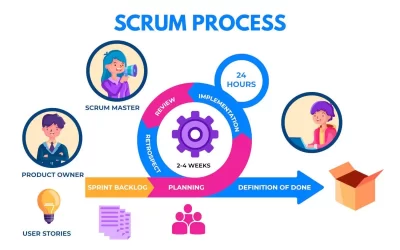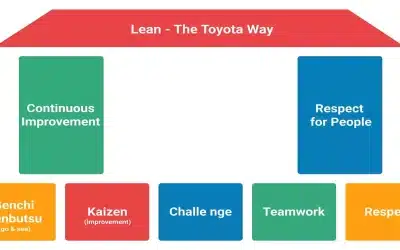In project management, there are a multitude of tools and methods to simplify the work of the project leader and their team. For example, the RACI Matrix makes it possible to distribute the roles and responsibilities of all project members; KPIs help you to navigate your project by keeping an eye on all its parameters (deadlines, budget, quality, performance, etc.); the DACI method facilitates group decision making and the OKR method helps you define and measure your objectives.
For a project to be profitable, it’s important to ensure that the budget, deadlines, and level of quality requested by the client are respected. To do this, the project leader must be able to quickly follow and control the task’s status or the entirety of the project. And to help them in this mission, there is an obvious tool to use: the RAG Model.
What is the RAG Model?
RAG is an acronym which stands for Red, Amber, Green, like a traffic light. These colours are used to define a project or task’s status, and function on the same principle as traffic lights.
This simply system is generally used during monthly or weekly status reports. It makes it possible to inform or alert the project leader, their team and the stakeholders of the state of the project, and to quickly decide the actions to be taken to improve the situation.
In project management, the RAG model is a popular method to evaluate a project’s status or an individual parameter like budget, deadlines, resources, quality, etc.
Depending on the company, project leaders can use smileys or even weather symbols instead of colours. What’s important is that the information is clear and comprehensible for everyone.
What does each colour mean?
In this table, discover the different meanings of the three colours and the recommended actions.
| Colour | Significance | Action |
| Red | – One or several aspects of the project were exceeded (generally the budget or deadline) or missing (resources or quality).
– The project is facing significant issues which require immediate corrective action or risk failure.
– The problem(s) encountered cannot be resolved by the project manager.
– There is a concern with validation by the client / stakeholders. |
The project manager and company management should review the project with an aim to identify the origin of this red status.
They must then define an action plan to resolve the problems detected and minimize the damage caused.
Sometimes the damage is too great and the decision is made to stop the project. |
| Amber | – One or several aspects of the project (budget, deadlines, quality, etc.) were slightly exceeded, but are still within the client’s tolerance threshold.
– The project has problems which need to be addressed, but they don’t endanger it.
– One or many problems encountered can be solved by the project leader and their team. |
The project must be closely surveyed. Management must be informed but it’s not necessary for them intervene. They can leave the project leader to manage the difficulties themselves, all whilst ensuring that the project doesn’t fall into the red category.
The project leader and his team work to resolve the projects to boost the project into the green. |
| Green | – The project is proceeding as expected, without any problems or delays. | No action is necessary. The project leader will probably have to justify the status to the client and assure them that there are no hidden problems. |
Advantages of the RAG Model
Thanks to the RAG model, you find all the parameters of a project and their status on a single document. At a glance, you have a summary of the project situation, and you know what your team needs to focus on to move the project in the right direction.
This system can be used for all the projects of a company. Therefore, the management can identify the projects which have difficulties and take the necessary decisions, i.e. to mobilise more resources to advance the projects to green, or to abandon the projects which have had a red status for too long.
Limits of the RAG Model
The main limitation of this model is that the identification of the status of a project is based on the judgement of the project leader. This can cause several problems:
- either the project lead is too sure of himself and his team and will give a green status to the project despite several problems;
- either he doesn’t want to admit that the project has problems and will minimize them by giving it an amber status rather than red;
- or the project leader doesn’t have all the information to hand and doesn’t know the true status of the project. Therefore, he will give it the wrong status.
The other problem with the RAG model is that it’s important to ensure that all project members fully understand the meaning of the different statuses and the actions which are required of them.
To conclude, the RAG model is an effective tool to quickly know whether a project is on track or if it risks failing based on a system that everyone knows and understands: traffic lights.









